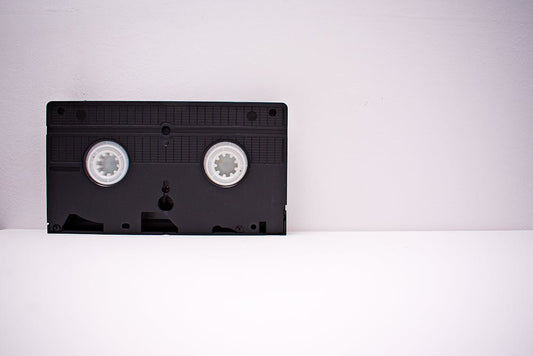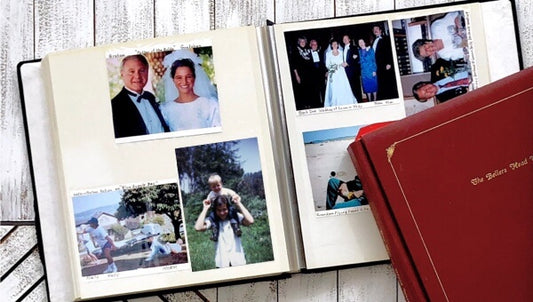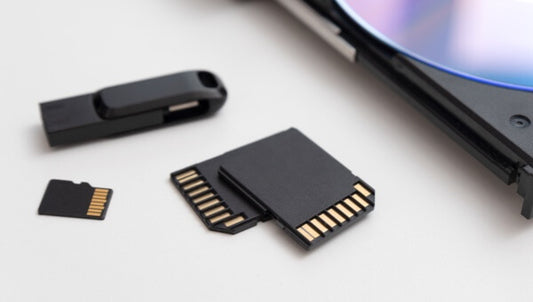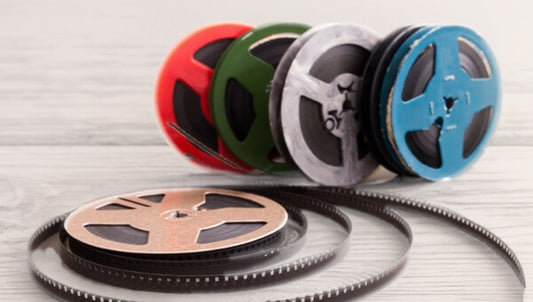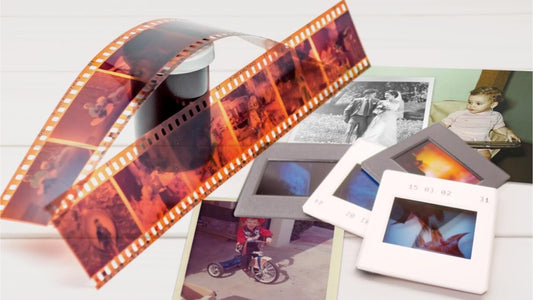There’s something special about watching old home videos on VHS - seeing birthdays, graduations, and goofy childhood moments in that nostalgic, grainy format. But nothing kills the mood faster than fuzzy static, jumping images, or a solid blue screen. If you've popped in a tape only to ask yourself, “Why is my VHS tape fuzzy?” - you're not alone. We’ll explore the most common VHS playback issues, why they happen, and what you can do about them. We'll also explain when it’s time to stop fixing and start preserving, especially with Capture’s professional digitization services.
Jump to:
- Why do VHS Tapes Get Fuzzy?
- Understanding VHS Tracking & Artifacting
- Common VHS Errors & Symptoms
- VHS Mold & Long-Term Degradation
- Fixing vs. Preserving – When to Digitize
- Why Digitize?
- What a VHS Tape Fuzzy Signal Really Means - and How to Save It
Why do VHS Tapes Get Fuzzy?
How do you fix a blurry VHS tape? Start by checking your VCR heads for dust or debris. Most fuzzy playback issues come down to how the tape interacts with the machine.
Over time, VHS tapes degrade. They're made from magnetic tape that stores video and audio data. Unfortunately, this magnetic layer weakens with age, especially if stored in a hot, humid, or dusty environment. Common causes of VHS recording texture, VHS static, and the VHS error effect include:
- Dust or dirt on the tape
- Dirty or misaligned VCR heads
- Magnetic tape wear from repeated playback
- Warped reels due to poor storage

Here are some simple fixes to try:
- Rewind and fast-forward the tape fully before replaying
- Clean your VCR heads with a head-cleaning cassette
- Try a different, high-quality VCR
- Adjust the tracking using the VCR’s manual dial (if available)
But if you’ve done all this and it’s still fuzzy? The damage may already be done.
Understanding VHS Tracking & Artifacting
Tracking refers to how the VCR aligns with the tape’s control track. When this alignment is off, you’ll notice issues like flickering, skipping, or VCR lines across the screen. These are classic VHS tracking problems.
VHS artifacting refers to digital-looking glitches - odd color blocks, flickers, or distortion - especially at the start of playback. These glitches often come from worn tape edges or misaligned heads.
Here is what you can try to improve playback:
- Manually adjust tracking on your VCR (usually with “+” and “–” buttons)
- Use a VCR with auto-tracking for better alignment
- Avoid pausing or rewinding mid-scene to reduce tape stress
Old tapes with worn edges may never play cleanly again, which is why preserving them digitally is often the best long-term move. If you're in California, check out our Los Angeles video transfer service for expert support.

Common VHS Errors & Symptoms
How can you tell if a VHS tape is damaged? You’ll usually notice visual or audio issues first - lines, static, or missing video. But other clues show up before you even hit play. Here are some red flags to watch for:
- Blue screen VHS: Your VCR plays a blue screen when it can’t read the signal. This could mean the tape is blank or severely damaged.
- VHS effect loading: This refers to that “buffering” or glitch aesthetic you sometimes see during loading or rewinding – a visual effect some chase for retro projects, but it may signal mechanical stress on the tape.
- Warped reels or twisted tape
- Obvious signs of wear: wrinkles, sticky sections, or tearing
Some people even chase these glitchy effects for retro video projects - but for most, it’s a frustrating sign that the tape may be on its last leg. And if you’ve got a stack of tapes in Texas, our Houston video transfer service can help before the damage becomes permanent.
VHS Mold & Long-Term Degradation
Can you restore moldy VHS tapes? Technically yes - but it’s risky. VHS mold grows when tapes are stored in damp, humid environments. It feeds on the binder layer that holds magnetic particles together. You’ll know you’ve got mold if you see some of the following:
- White, gray, or black patches on the tape reels
- A faint powdery residue inside the cassette window
- A musty smell
Trying to clean mold on tapes yourself can damage them further or spread spores to other tapes and equipment. It’s best to let professionals handle mold removal.
Do VHS tapes lose quality over time even when stored in good conditions? Yes. Most tapes start degrading within 10–25 years. That’s why converting formats early is smart - especially for tapes with emotional or historical value.
Fixing vs. Preserving – When to Digitize
Not every fuzzy tape needs professional repair. Sometimes a quick tracking adjustment or head-cleaning session will do the trick. If the picture clears up after a few simple steps, the tape is probably still in decent shape. Here is when it’s OK to fix yourself:
- The tape plays with minor static
- The image is jumpy but still visible
- The VCR works well with other tapes
However, in cases like these, digitization is definitely the best option:
- The tape has mold, deep wrinkles, or broken film
- The VCR can’t detect the tape (blue screen)
You want to transfer VHS to digital before more quality is lost. Once the tape starts showing signs of damage, time is no longer on your side.

Why Digitize?
Here’s why converting your tapes to digital format is the smartest long-term solution:
- Digital files don’t degrade over time
- You can make endless backups
- It’s easier to share clips with friends or family
- You’ll never worry about tape damage again
For specialty tapes like VHS C to digital, digitization is even more important since these formats are harder to find compatible devices for today.
What a VHS Tape Fuzzy Signal Really Means - and How to Save It
So, why is my VHS tape fuzzy? It could be dust, tracking issues, tape wear, or even mold. Some problems have quick fixes - but others signal it’s time to stop playing and start preserving. Old tapes won’t last forever, especially if you’re seeing VHS static, blue screen VHS, or signs of VHS mold. But even if your tape’s not perfect, it may still hold precious moments you can recover. Ready to save your precious VHS memories? Let Capture ensure they stay watchable for generations to come.


